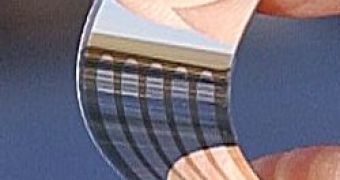Solar cells are regarded as one of the key technologies towards a sustainable energy supply and have already found many applications, mostly in situations where electrical power from the grid is unavailable, such as in remote area power systems, Earth-orbiting satellites and space probes.
Recently they have become more and more widespread in private homes where they can cut the utilities bill and make the owners feel that they are contributing to the well being of the planet. However, they are not very efficient and mass producing them has proved somewhat difficult.
Now, a new discovery of Nobel laureate Alan Heeger, professor of physics at UC Santa Barbara, who worked with Kwanghee Lee of Korea and a team of other scientists, brings the most efficient organic solar cells ever produced.
They created a "tandem" organic solar cell, made up of two multilayered segments combining their best qualities to gather a much wider range of the light spectrum coming from the sun, meaning that they can now harness wavelengths both shorter and longer than what was previously converted into electricity.
"The result is six and a half percent efficiency," said Heeger. "This is the highest level achieved for solar cells made from organic materials. I am confident that we can make additional improvements that will yield efficiencies sufficiently high for commercial products."
Indeed, the team expects this new discovery to be implemented into new applications that could hit the market in around three years, since the new solar cells "? can be fabricated to extend over large areas by means of low-cost printing and coating technologies that can simultaneously pattern the active materials on lightweight flexible substrates."
Another advantage that could make this new technique truly marketable is the fact that it is not only more efficient at harvesting sunlight, but also less expensive to produce.

 14 DAY TRIAL //
14 DAY TRIAL //